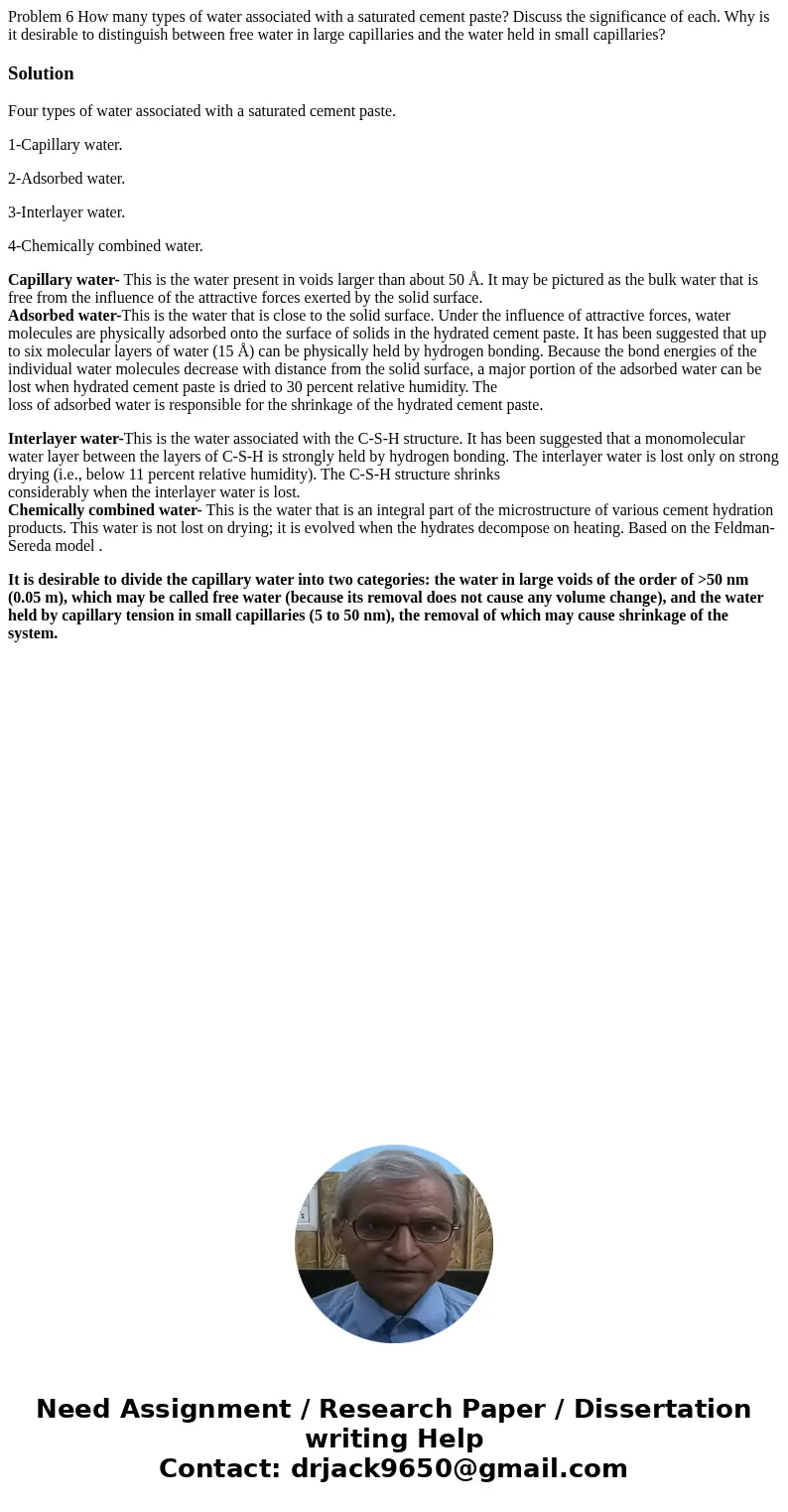Problem 6 How many types of water associated with a saturate
Problem 6 How many types of water associated with a saturated cement paste? Discuss the significance of each. Why is it desirable to distinguish between free water in large capillaries and the water held in small capillaries?
Solution
Four types of water associated with a saturated cement paste.
1-Capillary water.
2-Adsorbed water.
3-Interlayer water.
4-Chemically combined water.
Capillary water- This is the water present in voids larger than about 50 Å. It may be pictured as the bulk water that is free from the influence of the attractive forces exerted by the solid surface.
Adsorbed water-This is the water that is close to the solid surface. Under the influence of attractive forces, water molecules are physically adsorbed onto the surface of solids in the hydrated cement paste. It has been suggested that up to six molecular layers of water (15 Å) can be physically held by hydrogen bonding. Because the bond energies of the individual water molecules decrease with distance from the solid surface, a major portion of the adsorbed water can be lost when hydrated cement paste is dried to 30 percent relative humidity. The
loss of adsorbed water is responsible for the shrinkage of the hydrated cement paste.
Interlayer water-This is the water associated with the C-S-H structure. It has been suggested that a monomolecular water layer between the layers of C-S-H is strongly held by hydrogen bonding. The interlayer water is lost only on strong drying (i.e., below 11 percent relative humidity). The C-S-H structure shrinks
considerably when the interlayer water is lost.
Chemically combined water- This is the water that is an integral part of the microstructure of various cement hydration products. This water is not lost on drying; it is evolved when the hydrates decompose on heating. Based on the Feldman-Sereda model .
It is desirable to divide the capillary water into two categories: the water in large voids of the order of >50 nm (0.05 m), which may be called free water (because its removal does not cause any volume change), and the water held by capillary tension in small capillaries (5 to 50 nm), the removal of which may cause shrinkage of the system.

 Homework Sourse
Homework Sourse